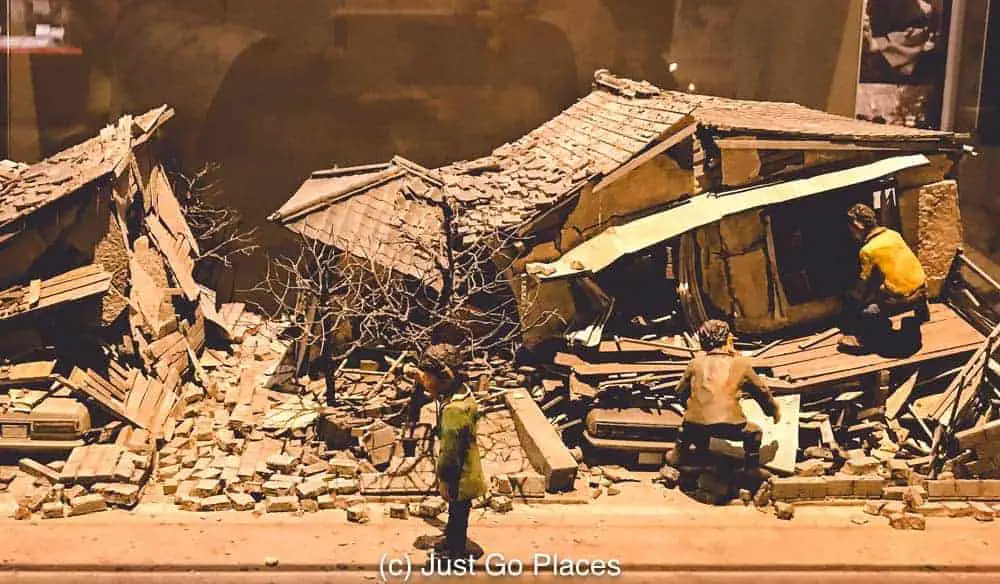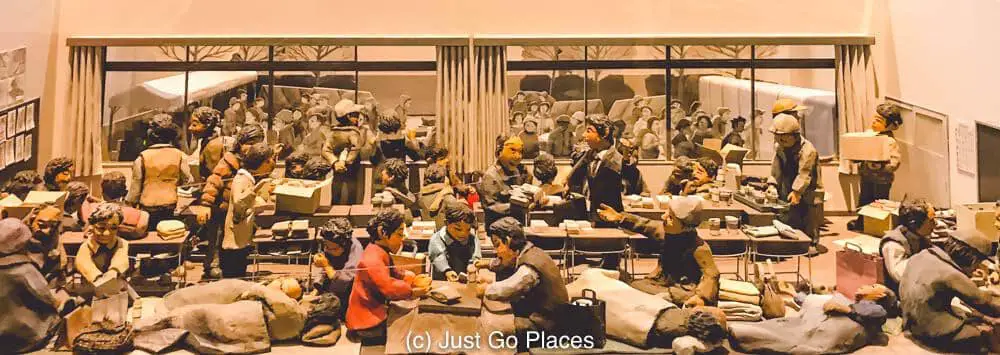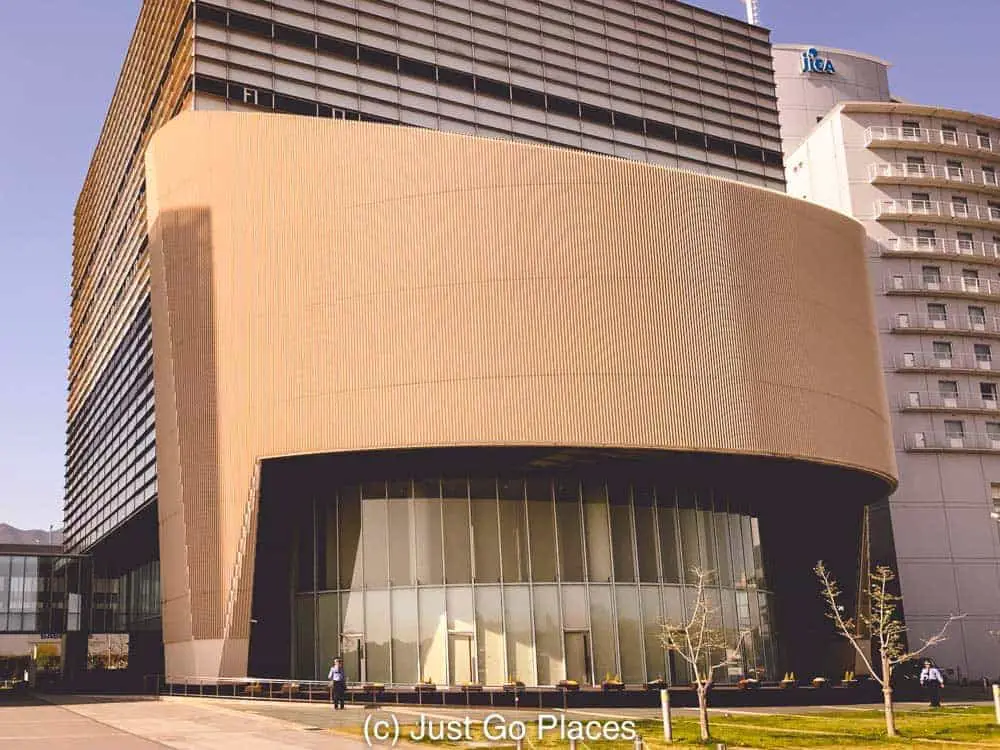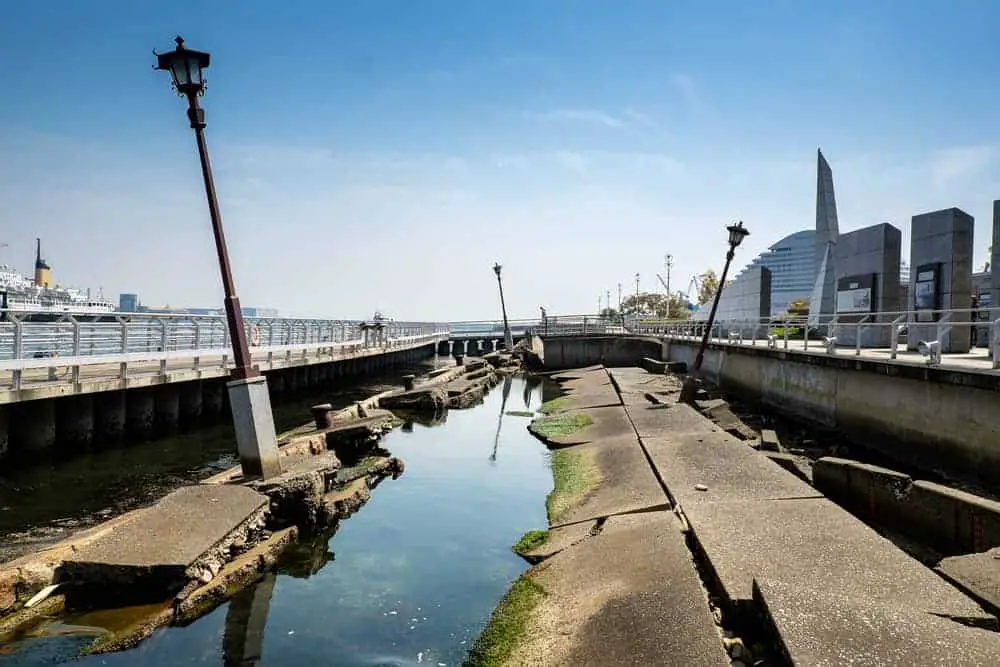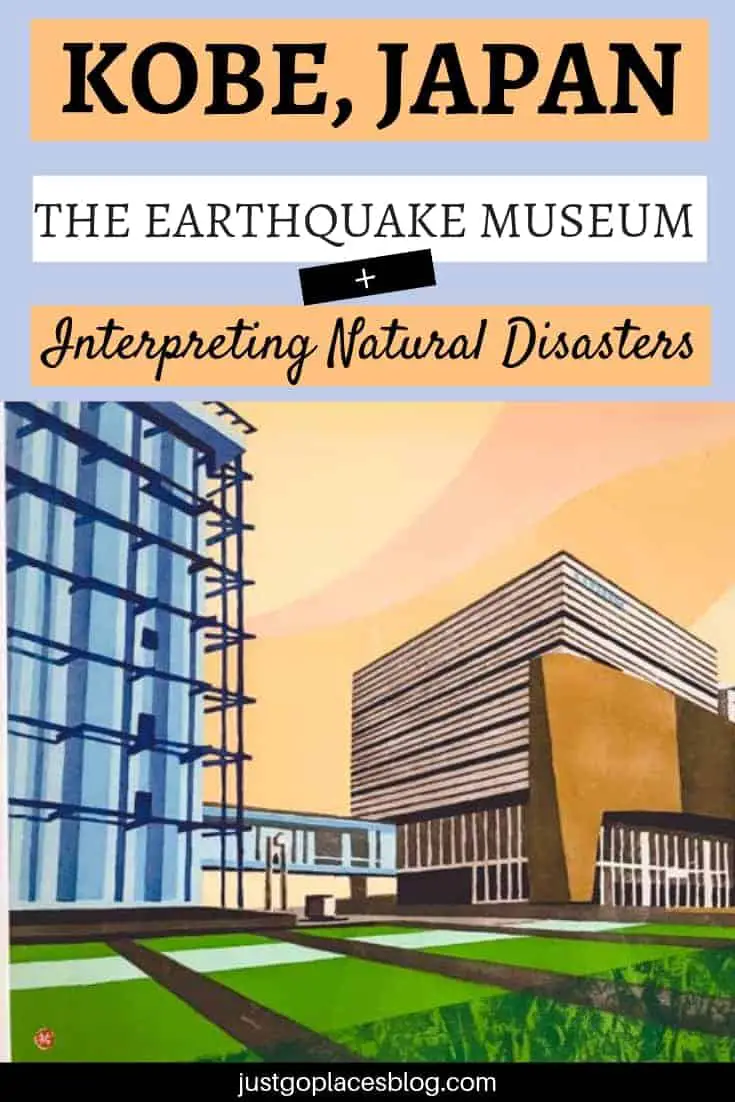The night of the Earthquake in Kobe 1995, the narrator of the video said she fell asleep next to her sister like she had every night for the last 15 years. She woke up to rumbling in the wee hours of the morning and furniture crashing around the room. Her sister was trapped under debris of their house. When she heard the rescuers searching for them, her sister told her to go first. She managed to get out before the building collapsed completely. She never saw her sister again. The teenager is now a woman and not surprisingly still traumatized by the events of that morning of January 1995 and the Kobe Earthquake in Japan. Her story is one of many told at the Kobe Earthquake Museum. This well planned earthquake museum also explores the causes of the Kobe Earthquake, the effects of the Kobe Earthquake, the responses to the Kobe Earthquake as well as staggering facts about the Kobe Earthquake and its enormity.
Contents
What To Expect At The Kobe Earthquake Museum
The great Hanshin-Awaji Earthquake Memorial Disaster Reduction and Human Renovation Institution is quite the name for the Kobe Earthquake Museum. The spiffy modern earthquake museum Kobe has erected commemorates the tragedy of a short and brutal earthquake.
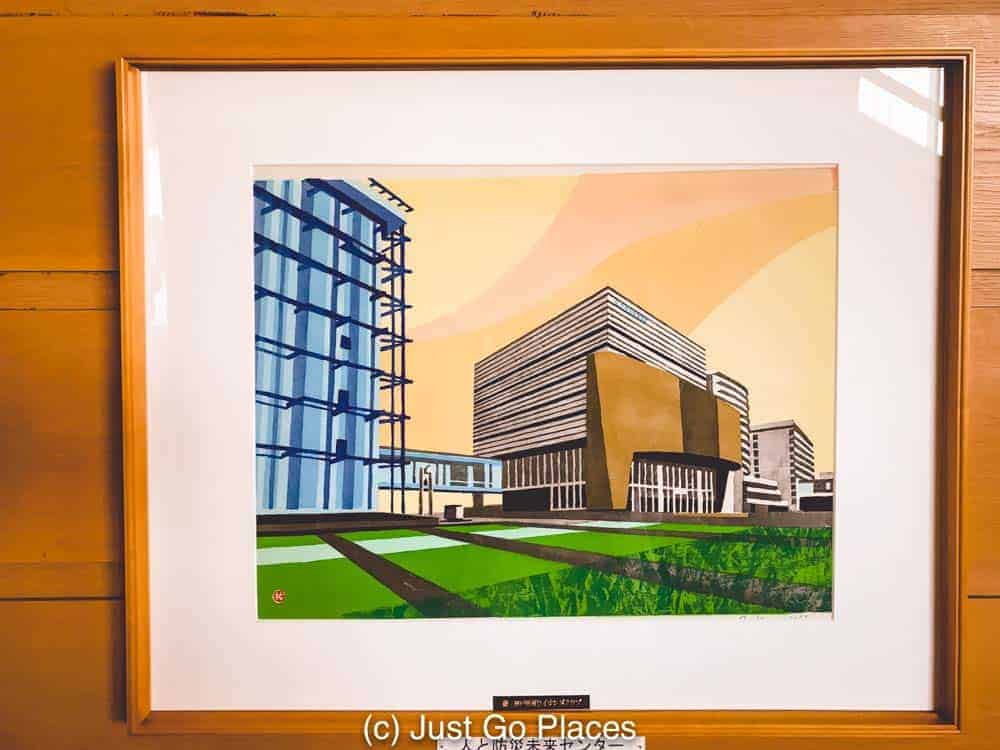
An artist rendering of the Earthquake Museum Kobe has erected to commemorate the 1995 Kobe Japan Earthquake.
The Kobe Earthquake Memorial Museum comprises of two buildings connected by a walkway. After you buy tickets you are told to go to the top floor of the opposite building and work your way down.
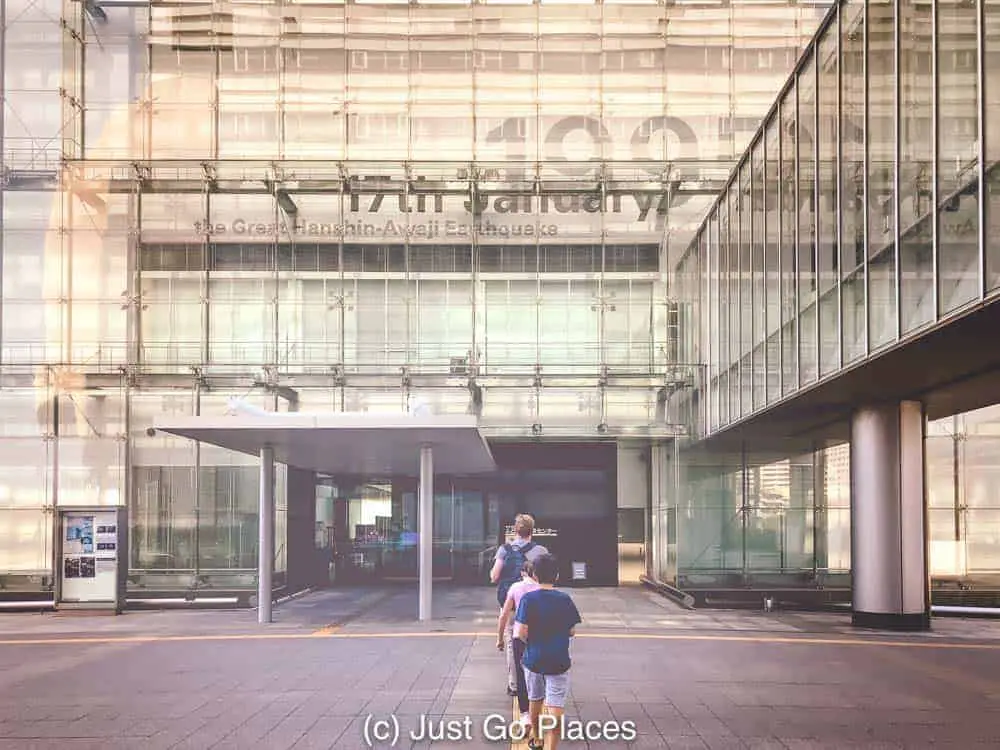
Clearly my kids have been in Japan too long because they are walking dutifully along the straight line leading to the entrance of the Kobe Earthquake Museum!
Among the best exhibits is an interactive video of an earthquake simulation similar to the 1995 Earthquake in Kobe Japan (complete with English translation). You also walk through a Kobe street that showed how the 1995 Kobe Eartquake affected it.
Then there was a video of the Kobe Earthquake with grainy CCTV footage. You got headphones that translated everything to English The actual footage being CCTV footage brings real immediacy to what you see. What you see are actual houses crumpling, bridges falling and trains crashing – the effects of the Kobe earthquake as it was happening.
The most sobering realisation about watching the Kobe Earthquake 1995 damage? You can’t comfort yourself that the footage isn’t real because it was produced through Hollywood magic.
Over the images you hear the memories of the survivors of the earthquake in Kobe 1995. Some examples of the Kobe Earthquake effects on real people:
- a child being given a teddy bear by the Girl Scouts of America;
- a letter pinned to the front door by a son living in Osaka who rushed down to see if his parents were safe;
- a husband who fell asleep downstairs in th family home remembering the wife who died sleeping in their bedroom; and
- a family who survived with the only damage to their home being a set of broken golf clubs.
Overall we thought the message of the Kobe Earthquake Museum was uplifting. This disaster happened but the 6000 people who perished in the Kobe Earthquake in Japan will not be forgotten or have died in vain.
Some Interesting Facts about the Kobe Earthquake of 1995
A listing of the Kobe Earthquake facts show the severity of the catastrophe. The Great Hanshin Earthquake was short and catastrophic.
- Over 100,000 buildings collapsed during the Kobe Earthquake.
- The Kobe Earthquake death toll was 6,000 people. Another
- In the Kobe Earthquake 1995, 27,000+ people were injured.
- Although lasting only 20 seconds, the Kobe Earthquake magnitude registered 7.2 on the Richter scale.
- There were 35,000 people pulled out by rescuers from damaged buildings.
- Just as devastating 1995 Kobe Earthquake itself, the post-earthquake fires raged out of control. These fires hampered the government responses to the Kobe Earthquake,
- The 1995 Kobe Earthquake caused $132 billion worth of damage.
People did not feel the responses to the Kobe Earthquake by the Japanese government were adequate. The Kobe 1995 Earthquake facts show:
- There were 300,000 survivors who had to be rehoused temporarily thanks to all the Kobe Earthquake 1995 damage.
- One of the primary effects of the Kobe Earthquake for the survivors was coping with utility services being cut off.
- After the Kobe Earthquake responses focussed on rehousing people. There were 1153 centers created to house the thousands of refugees who were left homeless after the Kobe Earthquake in Japan. Many of the refugee centers were converted from schools.
- Many of the older refugees just couldn’t cope with the change of routine and inconvenience that resulted from the 1995 Kobe Japan earthquake. For example, we heard the story of a grandmother who refused to eat because the washrooms were unclean in her opinion.
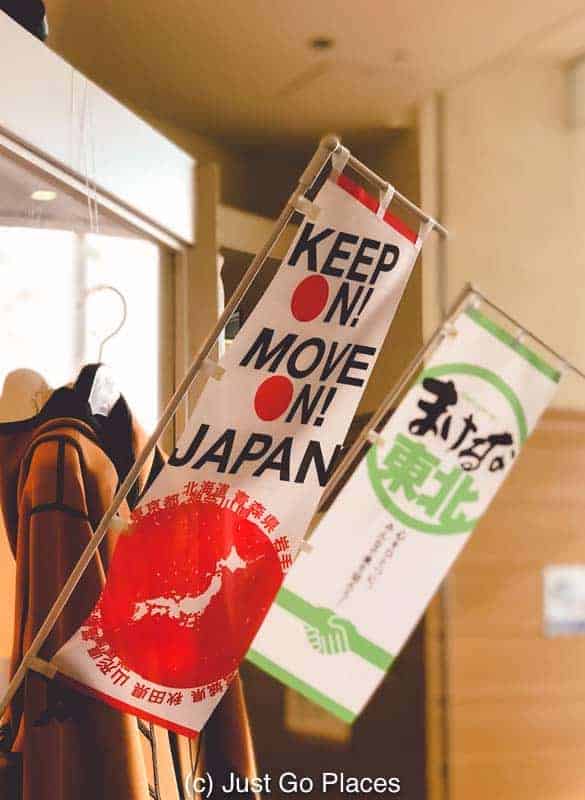
The Kobe earthquake responses to the 1995 Kobe Earthquake included encouraging people to get back on their feet.
Kobe Earthquake Causes
Of course, the Kobe Earthquake cause is natural and out of human hands.
Earthquakes in Kobe Japan are a result of Japan’s geographic position near fault lines and moving tectonic plates in the Pacific ocean.
On the other hand the Kobe Earthquake effects were magnified by man-made issues.
The Kobe Earthquake Museum did not shy away from the fact that the effect of the 1995 Kobe Earthquake were magnified by overpopulation and over-building. There was such a huge loss of life because Kobe is heavily populated.
Many of the deceased and displaced were older residents who lived in buildings which did not meet the newer Japanese building codes. These buildings followed the regulations from the 1960’s which experts had already proved were inadequate. The new rules which came into force in the 1980’s, however, did not apply retroactively to older buildings.
The Best Bits About the Kobe Earthquake Memorial Museum
The Kobe Earthquake Memorial Museum is really well laid out and has spacious thought-provoking exhibits about what caused the Kobe earthquake, the effects of the Kobe earthquake on the city and its people and the government’s inadequate responses to the Kobe Earthquake. It’s a beautiful set of modern buildings too.
The survivors stories really brings home the impact of what happened during the 1995 earthquake in Kobe Japan. For example hearing a large number of people were impacted by the Kobe earthquake 1995 damage is not the same as being told even one person’s story. It is the individual stories of loss, resilience and hope that you remember.
The Kobe Earthquake Memorial Museum was upfront about the issues that plagued the response to the Kobe Earthquake. It was widely felt that the Japanese government was slow to react and disorganised. Many people spent extended time in temporary housing waiting for their permanent homes to be built.. There were lots of older people who felt isolated when they were relocated to temporary homes far away from their usual lives.
Considering I find the Japanese to be wizards in efficiency (have you used their trains??), I was surprised by the grumbling. You heard the grumbling at how terrible the FEMA response was to the Hurricane Katrina disaster in New Orleans but even a country as super organized like Japan can get caught flatfooted in a natural disaster caused emergency.
What The Earthquake Museum Kobe Could Do Better
We felt the Kobe Earthquake Museum would have been better if there were more exhibits written in English explaining more of the Kobe 1995 Earthquake facts.
There’s a film about the earthquake and tsunami that affected Fukushima in 2011. This film runs every half hour. Although it is another major Japanese natural disaster, this part of the museum feels like an afterthought. The Fukuoka disaster feels disjointed from what the museum is trying to say about the Kobe Earthquake which is the focus of the rest of the museum.
Kobe Earthquake Memorial Park
The Kobe Earthquake Memorial Park is part of Meriken Park in Kobe. After the Port of Kobe was severely damaged, the bit that became the Kobe Earthquake Memorial Park was preserved to show how bad the damage was.
Getting to the Kobe Earthquake Museum
The Kobe Earthquake Museum is closed on Mondays (and Tuesdays if Monday is a public holiday).
It is easy to reach the Kobe Earthquake Museum by train. The exit is Iwaya Station on the Hanshin main line or Nada Station on the JR Line (handy if you are using a JR pass). Exit the station and go downhill towards the sea and turn right at the busy main street.
SPREAD THE WORD! PIN THIS TO YOUR TRAVEL PINTEREST BOARDS FOR FUTURE REFERENCE!
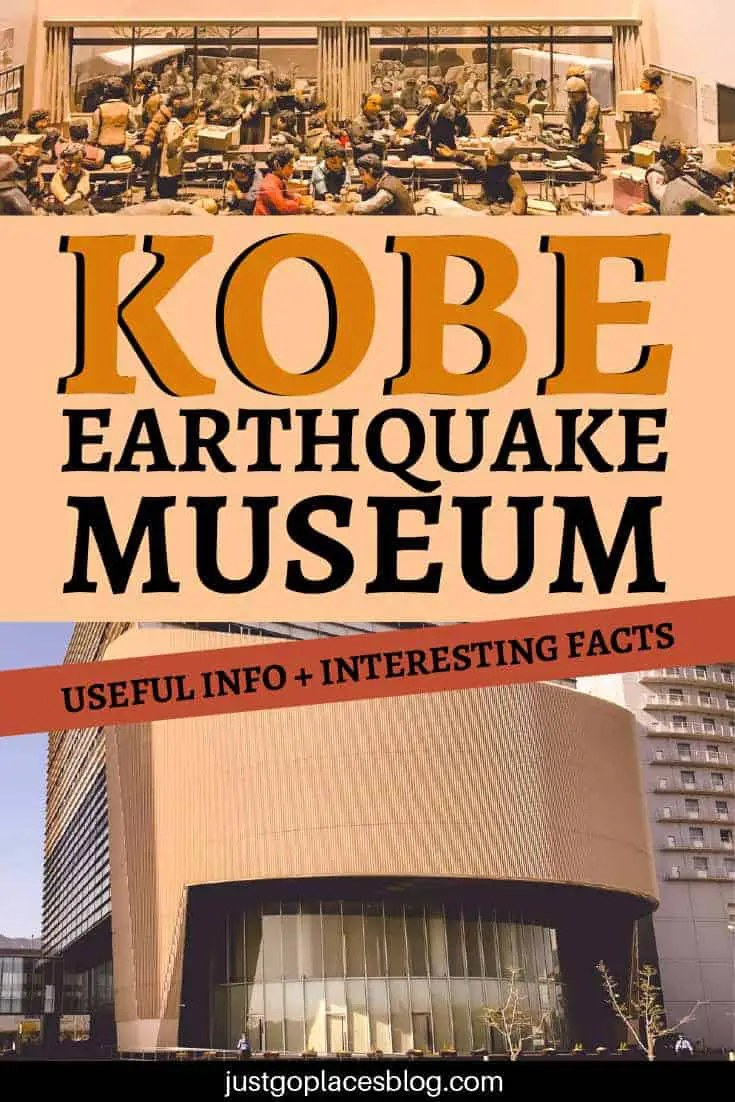
If you’re heading to Kobe, Japan, one of the best things to do in Kobe is visiting the Kobe
Earthquake Museum. This well planned earthquake museum explores the causes of the
Kobe Earthquake 1995, the effects of the earthquake, the responses to it as well as
staggering facts about the Kobe Earthquake. Check out a few useful info about the museum
+ tons of interesting facts. #kobe #japan #kobeearthquake #earthquake #museum.
This site generates income via partnerships with carefully-curated travel and lifestyle brands and/or purchases made through links to them at no extra cost to you. More information may be found on our Disclosure Policy.

